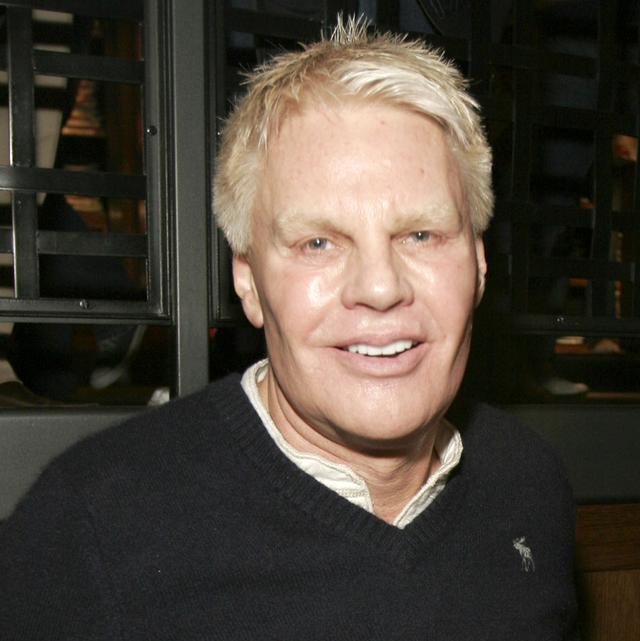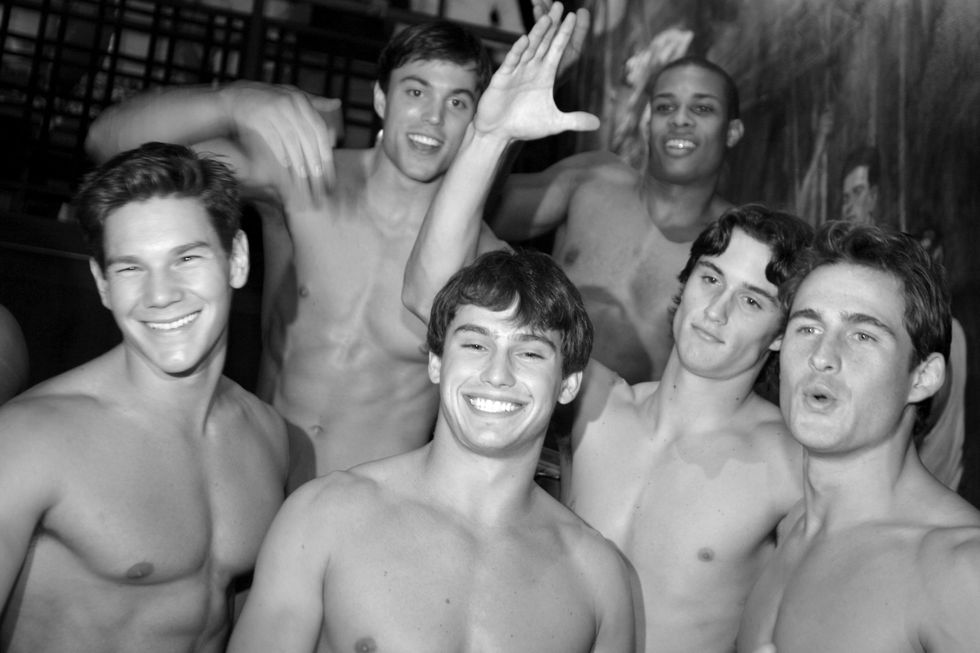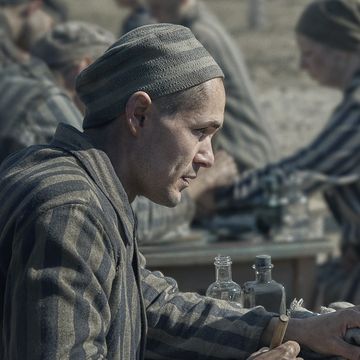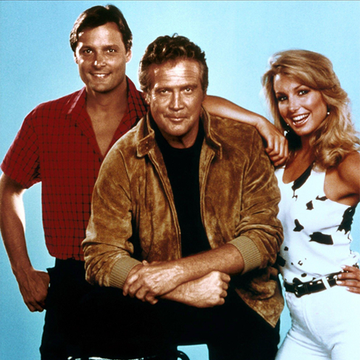At the turn of the millennium, there wasn’t a bigger high street fashion brand in America than Abercrombie & Fitch. In 1999, its mix of casual-preppy clothes and topless models prancing around to Steal My Sunshine in their nightclub-style stores pulled in $1.04 billion for the company. As one of the ex-merchandisers in the new Netflix documentary White Hot: The Rise & Fall of Abercrombie & Fitch says: “You could literally write Abercrombie & Fitch in dog shit on a hat and sell it for 40 bucks.”
The brand - which has been around since 1892 as an outdoor sporting retailer for the elite - was transformed mainly by the arrival of the new CEO, Mike Jeffries in 1992. Jeffries was brought on board by the close friend of Jeffrey Epstein, the retail mogul Leslie Wexner, and he had an extreme vision for how to transform the business into a global phenomenon. Jeffries’ formula for making the big bucks? “Heritage + elitism + sex + exclusivity = $$$,” according to another person in the doc. Another big move was hiring famed photographer Bruce Weber for its highly sexualised black-and-white campaigns. The move worked: A&F hit their apex when they invaded pop culture with commercialism and they were canonised in the LFO hit, Summer Girls: “I like girls who wear Abercrombie & Fitch / I’d take her if I had one wish” (followed by the massively problematic line, “Chinese food makes me sick”).
But slowly - just like the LFO song - people started noticing that there was something off. The smiling, ripped, tops-off college guys and wholesome, outdoorsy girls that were put at front and centre of all their campaigns and storefronts… why were they all white? Then reports started arising from people who had worked in the stores. Black people were allegedly told they weren’t allowed to wear dreadlocks - that’s when they were even allowed out from the back of the store; it's alleged that when they (and other non-Caucasian staff) questioned why they couldn’t go out on the floor, mysteriously they were then told: “Oh, we don’t have the hours”. And their names never appeared on the rota again.
Things came to a head in 2006 when Jeffries gave a bizarre interview to Salon in which he laid out his mission statement, with jaw-dropping quotes like: “We go after the cool kids… A lot of people don't belong [in our clothes], and they can't belong”, “Are we exclusionary? Absolutely” and “Good-looking people attract other good-looking people, and we want to market to cool, good-looking people. We don't market to anyone other than that.”
Jeffries’ - described by some as a “mad genius” - weird behaviour began to raise eyebrows as well. And his “terrible surgery” that made it seem like he was “chasing youth”, according to ex-employees in the film, was just the start of it. According to Salon, Jeffries “goes through revolving doors twice, never passes employees on stairwells, parks his Porsche every day at the same angle in the parking lot (keys between the seats, doors unlocked), and has a pair of "lucky shoes" he wears when reading financial reports”.
Stranger than that, Jeffries took over the company’s Gulfstream Jet, allegedly demanding that male models work as stewards in the plane, and that they must all be head-to-flip-flop in A&F - including the own-brand cologne. He apparently replaced the jet pilot for a younger model, which became part of a lawsuit against Jeffries, which he settled out of court. These same models were then hired to become Jeffries’ home helps as well.
In 2005, there were protests over A&F racist t-shirt slogans (‘Wong Brothers Laundry Service: Two Wongs make it White’ and ‘Juan More For the Road’ featuring a sombrero and a donkey) and later, nine former employees were plaintiffs in a racial discrimination case against the brand, which ended in a $50 million settlement, though they admitted no guilt.
The “cool” brand that he had created was slipping quickly through his fingers - and that was before the allegations against Bruce Weber arrived (he denied sexually assaulting models in 2017). Jeffries was forced to step down as CEO in 2014.
The Abercrombie & Fitch of 2022 is finding renewed success amongst Gen Z consumers, having made inclusivity a key part of their brand messaging. The days of topless models standing outside stores are long gone, too.
Where is Mike Jeffries now?
While A&F was tanking, Jeffries held on, despite being branded the “worst CEO of 2013” by Bloomberg’s Herb Greenberg, stating that the company’s share price had collapsed by 40% during the year. When his resignation was announced, share prices jumped up by 8 per cent.
Just before Jeffries left, he brought in his partner, Matthew Smith, to manage his affairs. Jeffries - who was previously married to Susan Hansen, and have one child together - placed Smith as the head of Jeffries Family Office, a limited liability corporation that vaguely “advocates for the personal interests of Abercrombie's CEO,” whatever that means.
Smith was described by employees in a Buzzfeed article as: “A handsome, polished Brit who behaves graciously around his partner's colleagues, often finishing emails with the sign-off “with every kind wish”... He’s slightly more approachable than Jeffries, and more even-tempered.”
The couple now live with their three dogs in Ohio, but Jeffries - now 77 - has all but removed himself from the public eye. The last thing we’ve heard about him is that he put his house in Manhattan up for sale in 2016, listing it for $20 million, so he’s unlikely to be short of cash. Did he achieve his own quest for cool, eternal youth? It’s beginning to look like we might never find out.
White Hot: The Rise & Fall of Abercrombie & Fitch is streaming on Netflix now.














